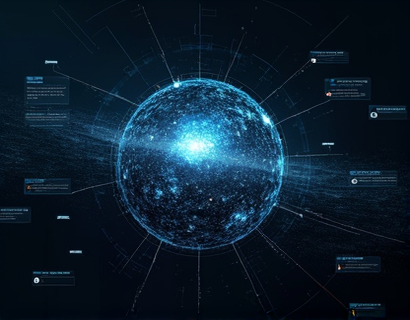AI-Driven Calculus Insights: Transforming Education for Students, Educators, and Young Learners
In the realm of advanced mathematics, calculus stands as a pivotal subject that bridges the gap between basic arithmetic and higher-level mathematical concepts. For students, educators, and young learners, grasping the intricacies of calculus can be a daunting task. However, with the advent of AI-driven tools, the landscape of calculus education is undergoing a transformative change. This article delves into how specialized AI chat platforms are revolutionizing the way calculus is taught and learned, offering insights and knowledge tailored to the needs of various users, while ensuring a safe and engaging experience for young minds.
Understanding the Need for Specialized Calculus Resources
The complexity of calculus requires resources that are not only comprehensive but also accessible. Traditional textbooks and lectures often fall short in providing the personalized attention and interactive learning experiences that modern students demand. AI-driven platforms address this gap by offering real-time, customized explanations and problem-solving assistance. These tools leverage machine learning algorithms to understand the user's level of knowledge and adapt the content accordingly, making calculus more approachable and less intimidating.
AI Chat Platforms: A New Frontier in Calculus Education
AI chat platforms represent a significant leap forward in educational technology. These platforms use natural language processing to engage users in conversational interactions, providing instant feedback and guidance. For students, this means having a virtual tutor available 24/7, ready to clarify doubts and explain complex concepts in simple terms. Educators can also benefit from these tools, using them to supplement their teaching and gain insights into students' understanding and progress.
Features for Students
For students, the primary advantage of AI chat platforms is the ability to receive immediate and personalized assistance. These platforms can break down complex calculus problems into manageable steps, offering detailed explanations and examples. Interactive quizzes and practice problems help reinforce learning, while adaptive difficulty levels ensure that students are constantly challenged but not overwhelmed. Additionally, the ability to ask follow-up questions based on previous interactions ensures a deeper understanding of the material.
Resources for Educators
Educators play a crucial role in calculus education, and AI chat platforms provide them with valuable tools to enhance their teaching methods. These platforms can generate customized lesson plans based on the class's overall performance and individual student needs. Real-time analytics allow teachers to identify areas where students are struggling, enabling targeted interventions. Moreover, AI can assist in grading and providing feedback on assignments, freeing up time for more hands-on teaching.
Child-Friendly Features for Young Learners
For young learners, the challenge lies in making calculus concepts understandable and engaging. AI chat platforms designed for this demographic incorporate child-friendly features such as visual aids, gamification, and simplified language. Interactive stories and animations help demystify abstract concepts, making learning fun and interactive. Parental controls ensure a safe browsing environment, allowing children to explore complex topics without exposure to inappropriate content.
Ensuring Content Verification and Accuracy
One of the critical aspects of any educational tool is the accuracy of the information provided. AI chat platforms employ rigorous content verification processes to ensure that the calculus insights and industry knowledge shared are reliable and up-to-date. This involves cross-referencing information with trusted academic sources, peer-reviewed journals, and expert input. By maintaining high standards of accuracy, these platforms build trust with users and contribute to a more robust educational ecosystem.
Adaptive Learning and Personalization
Adaptive learning is a cornerstone of AI-driven education. These platforms use machine learning algorithms to analyze user interactions and tailor the learning experience to individual needs. For students, this means receiving explanations and exercises that match their current level of understanding and learning pace. Over time, the platform adjusts the difficulty and type of content presented, ensuring continuous growth and improvement. This personalized approach not only enhances learning outcomes but also boosts student confidence and motivation.
Interactive and Engaging Learning Experiences
Engagement is key to effective learning, especially in subjects as challenging as calculus. AI chat platforms incorporate various interactive elements to keep users engaged. Interactive simulations and visualizations help students grasp complex concepts by providing intuitive representations. Gamification elements, such as points, badges, and leaderboards, add a competitive and fun aspect to learning. These features not only make the learning process more enjoyable but also encourage deeper exploration and understanding of the material.
Collaborative Learning Opportunities
Collaboration is another essential component of effective learning. AI chat platforms facilitate collaborative learning by connecting students with peers and experts for discussion and problem-solving. Forum-like interfaces allow users to ask questions, share insights, and work together on projects. This collaborative environment fosters a sense of community and mutual support, which is particularly beneficial for students who may feel isolated in their learning journey.
Accessibility and Inclusivity
Accessibility is a fundamental principle in the design of AI-driven educational tools. These platforms are built with inclusivity in mind, ensuring that users with diverse needs can benefit from the resources offered. Features such as text-to-speech, adjustable font sizes, and high-contrast modes make the content accessible to students with visual impairments. Additionally, multilingual support caters to a global audience, breaking down language barriers and making high-quality calculus education available to a wider audience.
Supporting Diverse Learning Styles
Every student has a unique learning style, and AI chat platforms are designed to accommodate this diversity. Visual learners benefit from diagrams and graphs, while kinesthetic learners can engage with interactive simulations. Auditory learners can listen to explanations and discussions, and reading-preference learners can access detailed written content. By providing multiple modes of content delivery, these platforms ensure that all students can find the approach that works best for them.
Future Prospects and Innovations
The potential for AI-driven calculus education is vast, with ongoing research and development promising even more advanced features and capabilities. Future innovations may include more sophisticated natural language understanding, enabling even more natural and fluid conversations. Integration with virtual and augmented reality technologies could create immersive learning environments, further enhancing the educational experience. As AI continues to evolve, these platforms will become even more intuitive and effective, solidifying their role as indispensable tools in calculus education.
Conclusion
The integration of AI-driven tools in calculus education marks a significant step forward in making this complex subject more accessible and engaging for students, educators, and young learners. By providing personalized, interactive, and accurate learning experiences, these platforms empower users to overcome challenges and achieve their academic goals. As the technology continues to advance, the future of calculus education looks brighter, with AI playing a central role in shaping a more inclusive and effective learning environment.









































